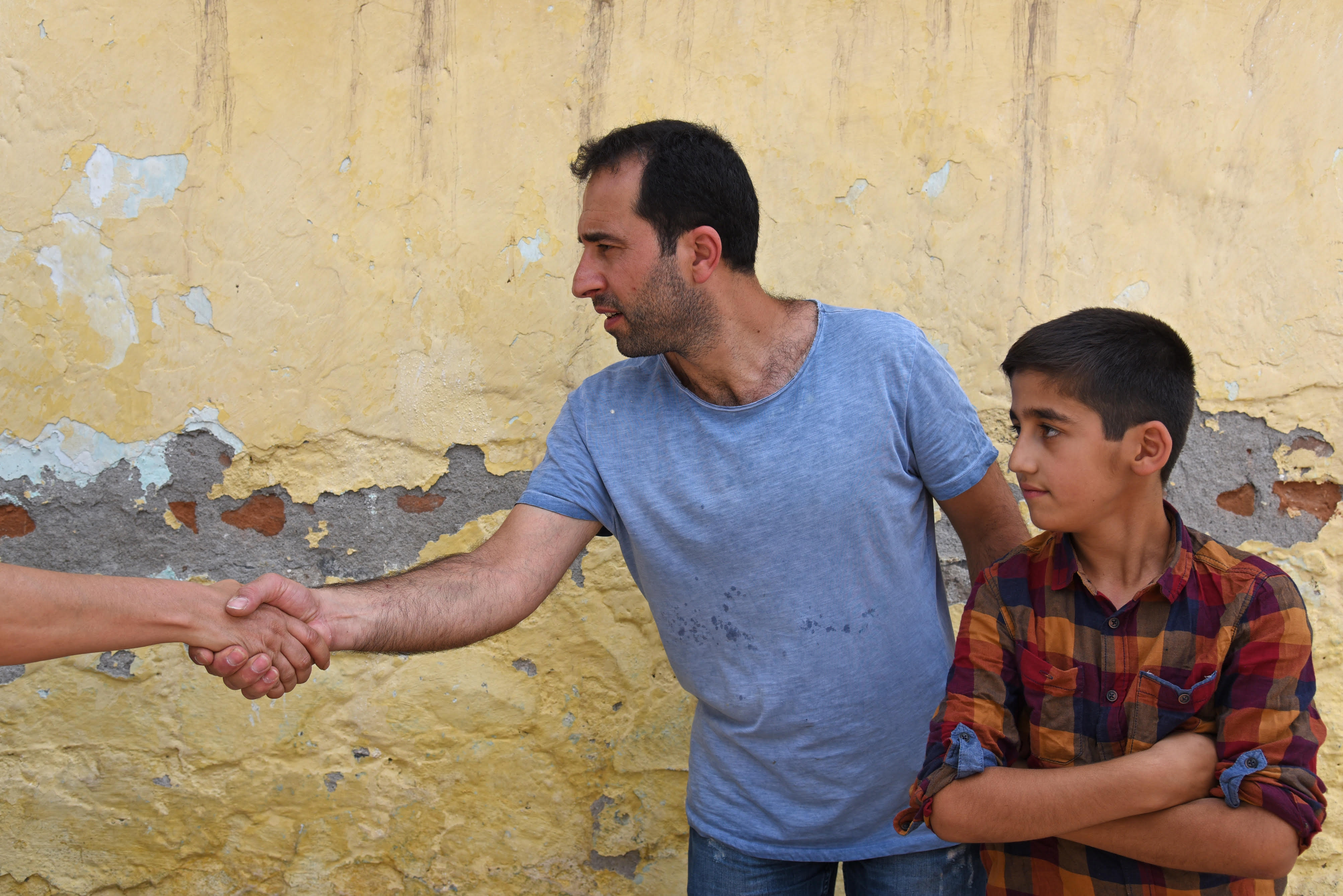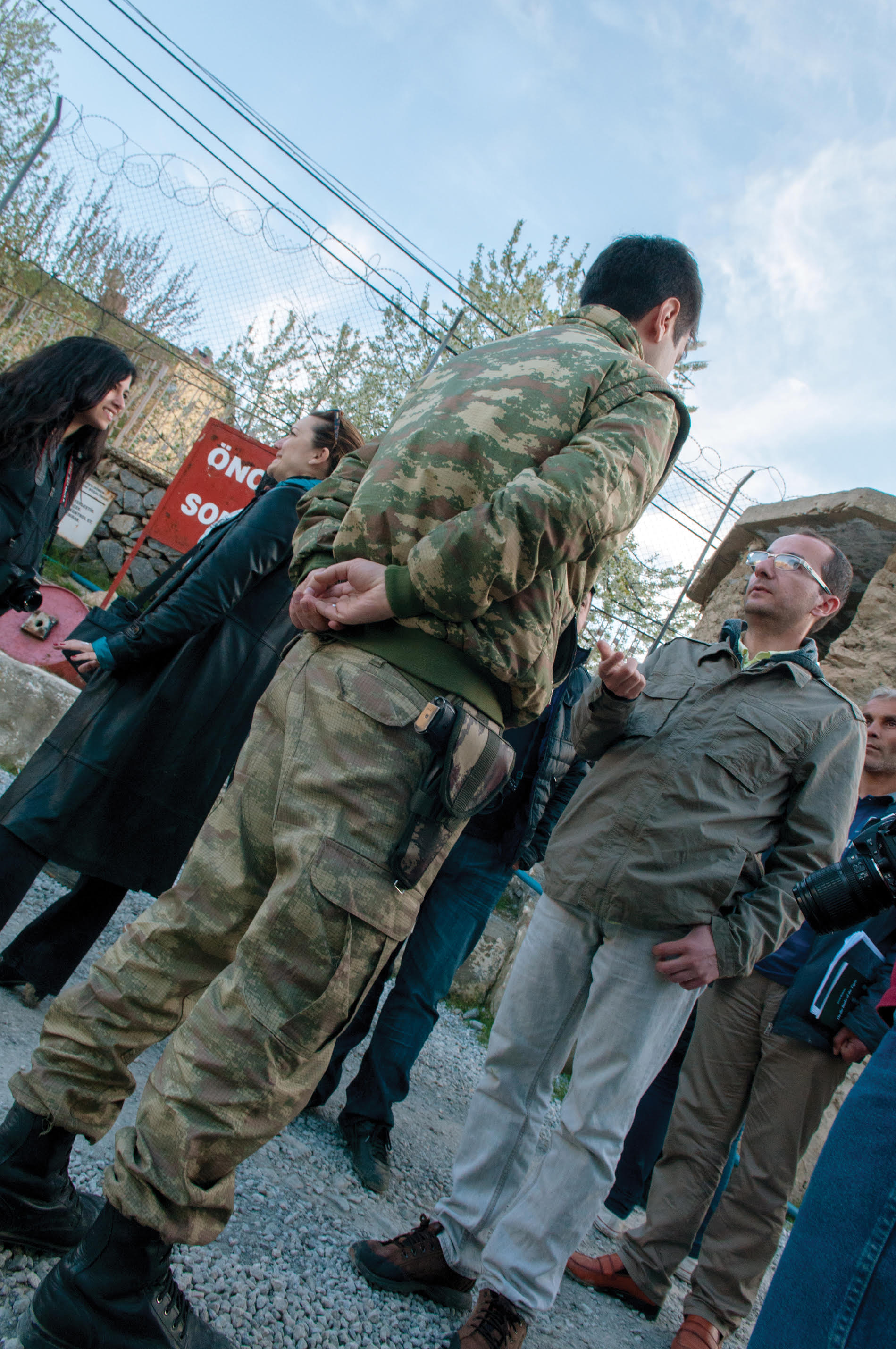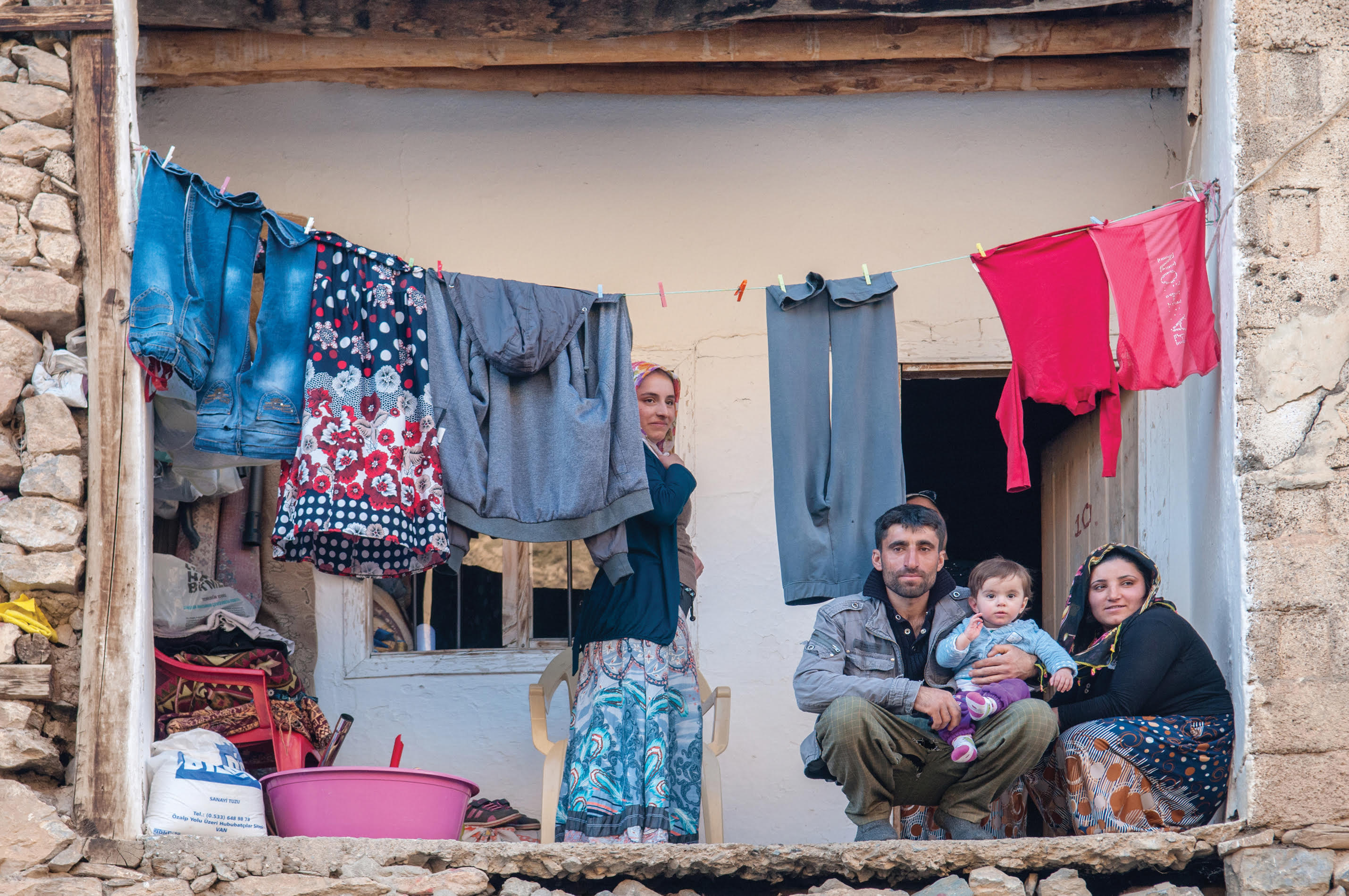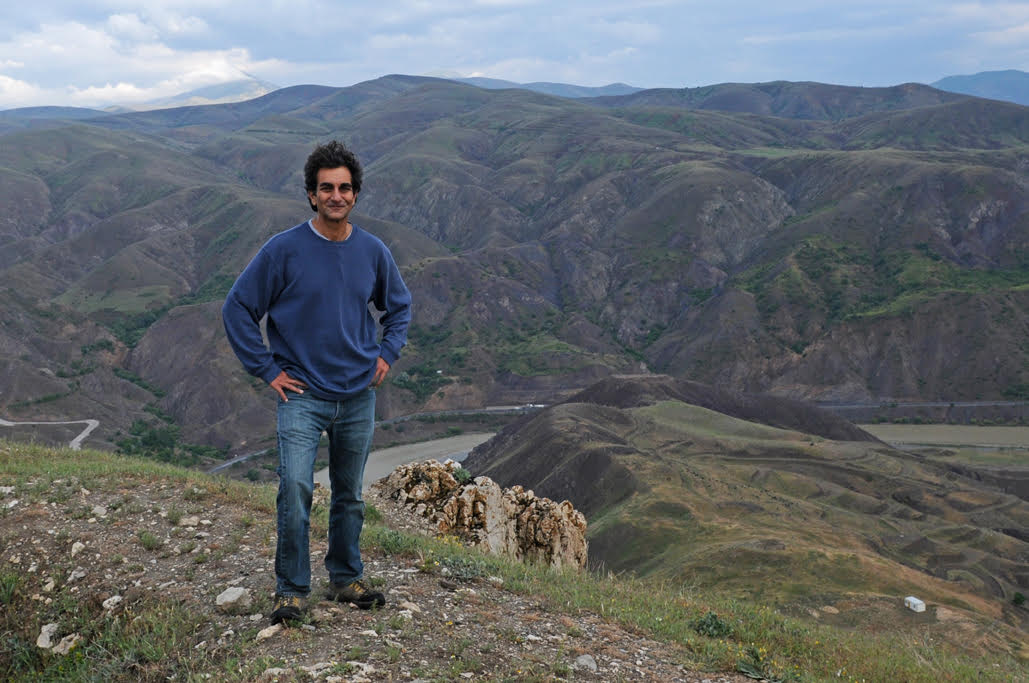Eight or nine soldiers, or maybe they were ten, greeted me with cold stares as I got off the Turkish Airlines plane and walked across the tarmac.
Each of them wore camo and each of them carried an assault rifle across his chest. I tried not to stare back, but as I glanced about, I could see that their weapons contained magazines and appeared to be ready to fire. And the barrel of each rifle was pointed at the ground near my feet.
I was flanked.
As I walked through the two lines of soldiers, they scrutinized me—the only American on a half-full plane of Kurdish passengers. I kept silent. I had imagined that I would blend in with the other passengers. But my jeans, my sneakers and certainly my apprehension must have betrayed me as an American.

I had just arrived in Van on a midsummer’s day in 1997, more than 20 years ago. I was alone. A Kurdish insurgency against Turkish rule had been rocking this part of the world—a world that I knew as Western Armenia—for months, and I had been cautioned to stay away.
The day-old Turkish-language newspaper that I had carried onto the plane in Istanbul that morning had served as my final warning. The paper featured a front-page photo of a Turkish army helicopter in flames, shot down the previous day somewhere in the province of Van.
The travel agent who sold me the round-trip ticket from Istanbul to Van had given me that newspaper. She arched her eyebrows as she pointed to the photo, intended as a non-verbal suggestion that I should reconsider my travel plans.
And yet here I was.
As I arrived in Van, greeted by Turkish soldiers who bore the appearance of an occupying force, my thoughts abruptly turned to leaving. Not right away. But eventually. Leaving eventually would become an undercurrent of my future travels to this part of the Armenian Highland. The ability to eventually leave would always influence my behavior: keep a low profile; do your research; leave.
History had compelled me to travel here in 1997 just as forcefully as it had kept me away until then. This was a forbidden land. But I was living and working in Yerevan, and Western Armenia just seemed too close to avoid.
My grandfather had lived in Van, an unofficial capital of Western Armenia, until 1912. The last of our family finally departed the region in 1918. No one from my family had ever returned.
Still, I tried to connect with a past that I hadn’t merely forgotten, but that I had never really known. I decided that I would start this process by finding my grandfather’s home.
I didn’t find it. His house was gone. His neighborhood was gone. His street—Kheranyan Street—was gone too. The Armenian Quarter of Van had been destroyed during the Genocide.
I mitigated my disappointment by returning.
During the next 20 years, I returned to each of the provinces of historic Armenia. I searched for the homes of other grandfathers, of other grandmothers, and for evidence—any other evidence—of Armenia’s forgotten past in today’s Turkey—the lands that so many of us know as Western Armenia, but which had for millennia, and until the Genocide, been known by its geographical marker, the Armenian Highland.
With each successive trip I found more of the Armenia that I thought had been lost. My steadfast opposition to ever traveling to this part of occupied Armenia gradually faded and finally disappeared. In its place I nurtured a growing compulsion to find and to document everything that we Armenians believed was forever lost.

I found the neighborhood in Zara where my maternal grandmother had lived until the summer of 1915, when she and her children were “relocated.” I found the Armenian Quarters of Sebastia and Kharpert, and Malatya, and Diyarbakir. I discovered pockets of people who told me they were Turks, or they were Kurds, and that oh, yes, they had an Armenian grandmother.
I was a member of the law faculty at the American University of Armenia (AUA) during some of my research trips. As a resident of Yerevan, my proximity to Western Armenia had given me the false illusion that traveling there would be simple. From the balcony of my apartment, after all, I could see across the frontier.
But no, traveling to Western Armenia from Yerevan wasn’t simple. It would have been easier and simpler to reach Van or Kars from Vienna or London than from Yerevan or Gyumri.
Back on the AUA campus after these trips, my colleagues reveled at my stories and encouraged further research. I laughed when my students suggested that I produce a book about the sites of Western Armenia—a historical guide to our homeland. The project was too big, I told them, and the research trips were too risky. And who would want to go there and relive the trauma of 1915?
I published books, instead, about the cultural sites of the Republics of Armenia and Artsakh. Our churches and monasteries in Azad Hayastan, Free Armenia, were being restored, revitalized and rediscovered.
I was haunted, meanwhile, by the destruction that I simultaneously witnessed in historic Armenia. Our churches there were being razed, re-purposed and “renovated.” I was disturbed by the knowledge that this destruction was ongoing. I wanted to shine a light on the loss and alert the world and stem the destruction.
And so, just as I had surprised myself by traveling to Western Armenia in 1997, I inched closer to the equally unlikely decision—after many years of research—to produce a historical guide to ancient Western Armenia.

There’s a world of difference between wanting to be an author and actually publishing a book. Khatchig Mouradian, a kindred spirit and scholar of Armenian history, helped me move between those two worlds. Together with George Aghjayan we mapped the lost regions of Armenia. And we methodically set about to find and document each of them.
Back in the US, I traveled to Fresno, California and met with the late cartographer and professor of Armenian history Robert Hewsen. His detailed maps of Armenia, created during two decades of research, became a centerpiece of my book.
I visited the archives of the Armenian Revolutionary Federation (ARF) in Watertown, Massachusetts and incorporated century-old materials from its vaults into my research on Kharpert and on the First Armenian Republic of 1918. I visited the Library of Congress in Washington, DC and found valuable material in their archives as well.
I scheduled several more research trips to each of the Armenian provinces of the former Ottoman Empire with scholars and journalists and activists and filmmakers.

During these trips, I believed I was traveling to Anatolia. For years, I had been told that we Armenians are from Anatolia, and from the Caucasus, and that some of us are Eastern Armenian and some of us are Western Armenian. I repeated these perceptions.
But I learned that our history is otherwise.
We Armenians are actually from one place: a place that stretches from Artsakh to Cappadocia, and from the Black Sea to Mesopotamia. This place is called the Armenian Highland.
And so, when I had finished writing the text, and after I had edited the photographs, and after the book was designed and ready to go to press, I understood that the title of the book had already written itself.
I became aware that the book that I had created was ‘The Armenian Highland.’




‘The Armenian Highland’ book (Stone Garden Press, 2019) is available online from http://www.HistoricArmeniaBook.com and from Amazon.com
This book is also sold at Abril Books and Sardarabad Books in Glendale, California and at Barnes and Noble nationwide.
God bless you for having the strength and persistence to complete your beautiful work, no,
Labor of love! As usual, your photos are stunning, your text perfect! I know that both of our
Father’s would love and cherish this book! It is classic, more blessings, Janet Sexton
Salute to you Mathew! Love to read the book and ordering it today.
Thank you for your courage. Your understanding of the importance of your research is of benefit to us all.
We from St Stephen’s Church in New Britain are proud to call you one of our own.
I could not help crying , when I saw you stand on the hills of Palou , where both my parents and all their family where from,
I do not have any pictures of their past , my Mom was in birds nest orphanage and my Dad , Corfou , etc ….
only stories from survivors in Providence , R .I ..
Never ad the pleasure of remembering Grandparents , talk to my extended family , none , sad 😞..
I am going to try to find your book , but here in Naples it’s no Armenian community… God bless you for having the courage to
Persevere … Elyse Magarian
Hi Elyse, thank you. The Armenian Highland book is sold online at http://www.HistoricArmeniaBook.com
Shipping is available worldwide.
Hey there,
Looking forward to ordering your book for my mom. Her paternal grandparents (my great-grandparents) lived through the genocide. Her grandfather John escaped to America and her grandmother Araxe ended up at an orphanage in Aleppo after a death march before John found and rescued Araxe and his niece in 1922 to bring them to NYC. They were from Diyarbakir. We don’t know much else about their experience or any extended family that may have survived as they both died before my mom’s father was 15, and he has since disconnected himself from his ancestry. All we have are their passport photos, wedding photo, and her maiden name.
We are currently visiting Armenia for the first time but it is not quite the same as visiting our familial roots in now present day Turkey. This book should help us take a tour of our true homeland in the Armenian Highlands without risking our safety. Thanks for your hard work putting that together.
Thanks for your message. I hope you’ll be able to find more of your roots in the Armenian Highland (aka Historic Armenia). My search has taken more than 20 years, but of course I started without the benefit of a historical guide to the region. So maybe your search will be expedited. My book is available from http://www.HistoricArmeniaBook.com and also from Amazon:
https://www.amazon.com/Armenian-Highland-Western-Armenia-Republic/dp/0967212057/ref=mp_s_a_1_14?keywords=armenia&qid=1567396358&s=gateway&sr=8-14